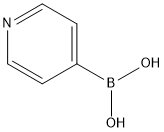Pyridine-4-boronic acid: properties, applications and safety
Sep 26,2023
General Description
Pyridine-4-boronic acid is a versatile compound with unique properties. It can form hydrogen bonds, interact with metal ions, and function as a pH-responsive linker. It is also an effective catalyst for amide synthesis reactions. With its applications in Suzuki-Miyaura coupling, heterocyclic compound synthesis, and sensor development, it is highly valuable in organic chemistry and drug discovery. However, it should be handled with caution due to its potential to cause skin and eye irritation. Proper safety measures, such as wearing protective equipment and seeking medical attention if necessary, should be followed when working with this compound.
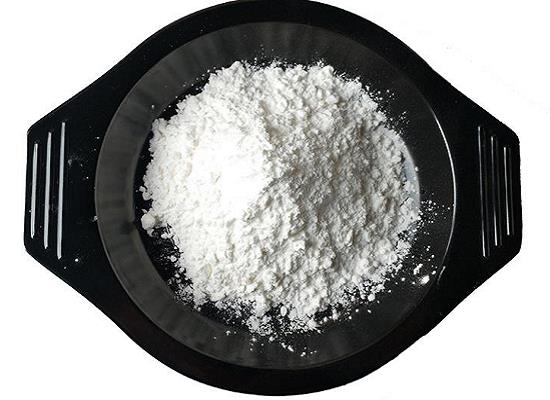
Figure 1. Pyridine-4-boronic acid
Properties
Pyridine-4-boronic acid is a unique boronic acid derivative that exhibits a range of interesting properties. As a building block in crystal engineering, its ability to form hydrogen bonds and interact with metal ions makes it highly useful in the design and synthesis of novel materials. The acidity of the B-H bond and the basicity of the pyridine nitrogen furthermore allow it to function as a pH-responsive linker, offering a means of manipulating the assembly and disassembly of crystals under acidic conditions. Pyridine-4-boronic acid is also a highly effective catalyst for amide synthesis reactions. In the presence of carboxylic acids and amines, it promotes dehydrative condensation to generate amides, serving as a key intermediate in the production of peptides and proteins. The derivative polystyrene-bound 4-pyridineboronic acid has been particularly successful as a catalyst for amidation reactions and esterification of alpha-hydrocarboxylic acids. The latter derivative's ability to bind alpha-hydrocarboxylic acids and activate their esterification reaction with alcohols is particularly noteworthy. The use of Pyridine-4-boronic acid and its derivatives in catalysis and crystal engineering opens up new opportunities for the development of novel materials and processes. 1
Applications
Pyridine-4-boronic acid is a type of boronic acid derivative that has recently gained attention in the field of organic chemistry due to its unique properties and potential applications. One of the most notable applications of pyridine-4-boronic acid is in the Suzuki-Miyaura coupling reaction, where it is used as a reagent in palladium-catalyzed reactions. This reaction is widely used in synthetic organic chemistry for the synthesis of various organic compounds, particularly those used in drug discovery and pharmaceutical research. Pyridine-4-boronic acid is also a promising candidate as a building block for constructing heterocyclic compounds with superior biological activities. As a N-containing building block, it has been used in the preparation of HIV-1 protease inhibitors and potential cancer therapeutics such as PDK1 and protein kinase CK2 inhibitors. Additionally, it has been found that boronic acid derivatives, including pyridine-4-boronic acid, have high binding affinities with diols, which makes them useful in areas such as sensor development and bioconjugation. Overall, the potential applications of pyridine-4-boronic acid are vast and expanding rapidly. Its unique chemical properties and ability to participate in various chemical reactions make it a valuable tool in organic synthesis and drug discovery. Further research in this area is needed to fully understand its potential and establish proper guidelines for its use in various applications. 2
Safety
Pyridine-4-boronic acid is a chemical compound commonly used for laboratory research purposes. It is important to handle this substance with caution due to its potential safety hazards. It has been categorized as causing skin and eye irritation, which means it can cause irritation or damage to the skin and eyes upon contact. To ensure safety when working with Pyridine-4-boronic acid, several precautionary measures should be taken. It is recommended to wash hands and face thoroughly after handling the substance and to wear protective gloves and eye protection. In case of skin contact, the affected area should be washed with plenty of soap and water, and if irritation occurs, medical advice or attention should be sought. Contaminated clothing should be removed and washed before reuse. In case of eye contact, the eyes should be rinsed cautiously with water for several minutes, contact lenses should be removed if possible, and medical advice should be sought if eye irritation persists. It is important to note that Pyridine-4-boronic acid should not be used for drug or household purposes, as it is intended for laboratory research only. 3
Reference
1. PubChem. COMPOUND SUMMARY: Pyridine-4-boronic acid. National Library of Medicine, 2005, CID:2734379.
2. Fulong CRP, Kim S, Friedman AE, Cook TR. Coordination-Driven Self-Assembly of Silver(I) and Gold(I) Rings: Synthesis, Characterization, and Photophysical Studies. Front Chem. 2019 Aug 13;7:567.
3. Safety data sheet: 4-Pyridylboronic Acid. TCI America, 2018, Product code: P1594.
- Related articles
- Related Qustion
- What is Pyridine-4-boronic acid? Feb 13, 2020
Organic boron compounds play an important role in organic chemistry, materials science and biochemistry, and can be used in organic synthesis such as hydride borylation of olefin and Suzuki coupling reaction.
Cannabidiol is a non-psychoactive compound from cannabis, effective in treating epilepsy, chronic pain, and anxiety.....
Sep 26,2023APIAvatrombopag is a medication that treats thrombocytopenia by mimicking thrombopoietin, increasing platelet count through receptor activation and signal pathways.....
Sep 26,2023APIPyridine-4-boronic acid
1692-15-5You may like
Pyridine-4-boronic acid manufacturers
- Pyridine-4-boronic acid
-
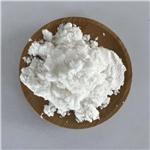
- $0.00 / 1kg
- 2023-11-27
- CAS:1692-15-5
- Min. Order: 1kg
- Purity: 99.9%
- Supply Ability: 30000 Kg
- 3-Pyridylboronic acid
-
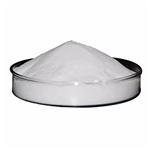
- $35.00/ kg
- 2023-10-28
- CAS:1692-15-5
- Min. Order: 1kg
- Purity: 99%
- Supply Ability: 20 Ton
- Pyridine-4-boronic acid
-
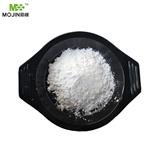
- $0.00 / 25Kg/Drum
- 2023-01-31
- CAS:1692-15-5
- Min. Order: 1Kg/Drum
- Purity: 99%
- Supply Ability: 5000KG




